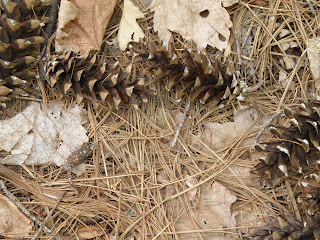When my niece was in grade school, I often took her for exploring adventures in the woods. On one such occasion, her cousin joined us and the three of us hiked the deer paths behind my house to a small creek on the Vasa Trail. The walk to the creek was quick for the two little girls skipped and ran all the way. Tired from all the running, our return walk was more leisurely allowing us to investigate the scenery. Scattered along the trail was cigarette butts, broken glass and an assortment of candy wrappers. As I normally do when out in the woods, I picked up the litter and put it in my pocket to throw away once I got home. The girls, observing what I had done, started picking up the trash as well. We talked about litter and how sad it was that people cared so little about the woods that they would throw garbage on the ground.
Very little has changed since that day in the woods. In the current issue of Splash, a publication of the Ocean Conservancy, the lead article discusses the plight of the Albatross. The Midway Atoll is home to more than 450,000 nesting pairs of Laysan and black-footed albatross. The scientists studying these birds estimate that an annual 4.5 million tons of plastic come to the islands. That alone is a huge amount of trash, but the truly sad fact is that the plastic arrives through albatross’ waste products. The birds eat the plastic floating on the sea, confusing it for food.
[Plight of Albatross Puts Scientist on Path to Tsunami Debris Research, Splash, Summer 2012, Ocean Conservancy]
Most of us have seen photos of skunks, heads trapped in glass bottles. We may initially giggle at their plight, but when you really think about it, how much extra effort is it to properly dispose of that bottle? When you toss that cigarette butt on the ground, what do you think happens to it? We humans create so much garbage and give so little thought to where it goes once we are done with it.
There is so much we can do to reduce the amount of garbage. From recycling and re-using, buying items packaged with less material and picking up trash left by others, we can all contribute to making our communities safer and cleaner for us and for our wildlife friends.


No comments:
Post a Comment